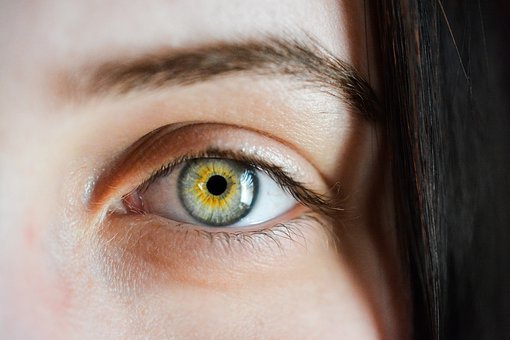Apart from their aesthetic beauty, eyes are indeed a fascinating structure of the human body with impeccable symmetry and structural organization. The vision itself is an essential component of life that aids us to experience surroundings like no other senses. Millions of photoreceptors present at the back of the eye (retina) react to the incoming light from the lens, producing an array of chemical reactions that signal our brain to process the image. All this happens in a split second, without a glitch. Let’s read on more to explore the amazing features of the human eye.
Our eyes see everything inverted
Whatever we see is a reflection of light that bounces off that object and enters the eyes. The cornea, lens, and iris are three structures that curve the incoming light and project to the retina, making an image that is upside down. The brain then comes into action and fixes the image orientation in an instant.
A fluid-filled organ
Eyes are filled with a colorless liquid called vitreous humor that has a plethora of functions. This liquid maintains the right amount of pressure in the eye that facilitates the passing of light. Furthermore, aqueous humor protects the eyes from infection, provides nutrients, and keeps every structure in place.
Protective features of the eye
The eyes in our body are securely placed in grooves known as the eye sockets that keeps it safe from damage. The eyelashes around the eyeball trap fine dust particles and prevent foreign bodies from entering. On the other hand, eyebrows make sure that the sweat or water droplets collected on the forehead cannot enter directly into the eyes.
Despite the protection our body provides, the eyes are still a very fragile organ that is prone to damage by environmental and chemical hazards.
The blind spot
Everything we see in front of us seems crystal clear, right? Surprisingly, that’s not the case. We all have a specific area in the retina with no photoreceptors to make an image. Some theories suggest that the brain makes up the missing image area through visual cues gathered from the environment. Whereas others believe that each eye compensates for each other’s blind spots. After all, it’s the information sent from both the eyes which the brain processes and merges into a single image. You can check your blind spot by following various methods. Blind spots are not an issue of concern unless you notice changes in your vision. Always consult a nearby ophthalmologist if you ever find such unusual changes.
Natural protection
In case of an infection, eye dryness, or in the presence of a foreign body, a mechanism of crying is initiated naturally to protect the fragile cornea, sclera, and lens from damage. The bony part of Lacrimal Bone is responsible for the production of tears. It is an amazing self-protection system placed by nature that also provides nutritional support for the eye surface.
Unique characteristics
Fingerprints have long been used as a secure way of identification because of their uniqueness. While corresponding fingers on both hands have the same fingerprint, the iris within the eyes varies greatly. When comparing the two, eyes have a set of more than 250 distinctive characteristics whereas fingerprints have only 40 characteristics for their identification.
The fastest lens
No lens on the face of the earth can be compared to the lens within the human eye. It is the fastest lens that focuses on objects with unprecedented precision and speed.
Detecting a plethora of colors
There are millions of color variations the eyes are capable of differentiating from. All these variations are formed by mixing three basic colors, red, blue, and green of the visible light spectrum.

The shape influences vision
The eye structure determines whether an individual will develop farsighted vision problems or encounter nearsightedness issues. A person with small eyes tends to develop farsightedness problems, while those with broad eyes often face nearsightedness. In both conditions, the eye loses its ability to focus on near and far objects with accuracy, causing objects to appear blurry. While glasses can be a simple fix to correct vision and focus, there are also surgical options available, such as LASIK, that can effectively correct nearsightedness. LASIK surgery can restore correct vision by reshaping the cornea, allowing the eye to focus properly without the need for a corrective lens. Well, lasik can correct nearsightedness as it can significantly improve sight and visual acuity. In general, LASIK and other advanced vision correction surgeries can help individuals regain clear, focused sight and enjoy a more comfortable, active lifestyle without the hindrance of refractive errors.
Underlying diseases
A simple examination of the eyes by this leading Ophthalmologist or one in your vicinity can help in narrowing down your diagnosis. Surprisingly, there are more than 20 different diseases that are easily identified through a detailed eye examination.
Most of us don’t realize the importance of flawless vision until problems start to arise. Being an extremely fragile organ, the eyes should be taken care of at all costs as damage dealt with its delicate components can turn out to be irreversible.

